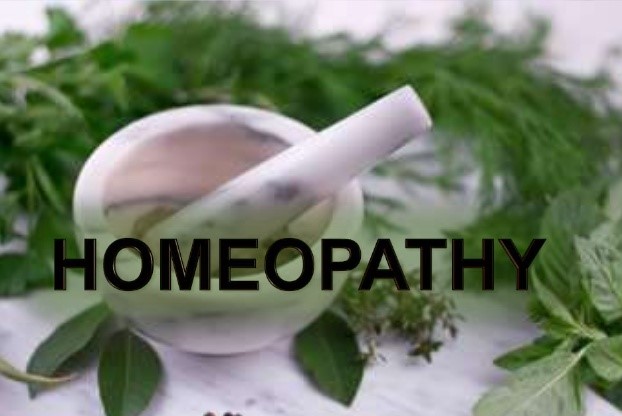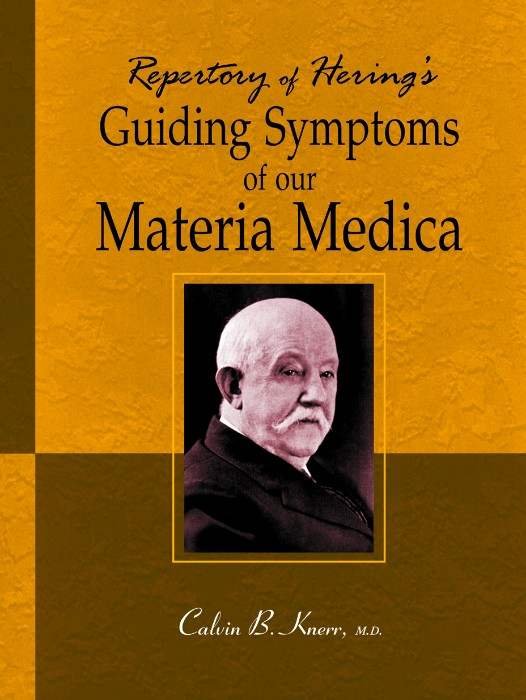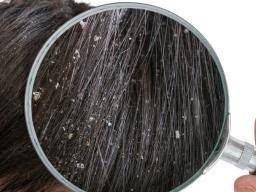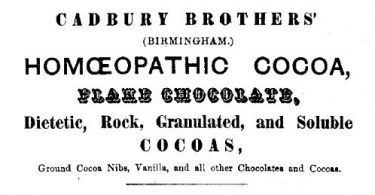Abstract: Temperament and Diathesis are integral part of constitution, which helps in individualisation. Temperaments are to a very large extent physiological but besides the stature of the patient, the matter of temperaments implies at the same time; mental and emotional tendencies in reaction to environment and circumstance. Diathesis is a state or condition of the body or a combination of attributes in an individual causing a susceptibility to disease. Throughout homeopathic literature attributes of it is given usually in scattered form. Dr. Knerr’s attempt to the subject is very exhaustive and thorough.
 Introduction: Temperament is derived from a Latin word Temperamentum which means a proper mixture, a mixing in due proportion.1 Temperament means a state with respect to a predominance of qualities; an internal constitutional state; a natural disposition; a proportioned mixture of qualities. The characteristic of a person which predispose him to act and behave in a particular manner is his temperament. The history of temperaments go back to more than thousand years, when Hippocrates, made a classic four-fold division i.e. Sanguine, Melancholic, Choleric, Phlegmatic.2
Introduction: Temperament is derived from a Latin word Temperamentum which means a proper mixture, a mixing in due proportion.1 Temperament means a state with respect to a predominance of qualities; an internal constitutional state; a natural disposition; a proportioned mixture of qualities. The characteristic of a person which predispose him to act and behave in a particular manner is his temperament. The history of temperaments go back to more than thousand years, when Hippocrates, made a classic four-fold division i.e. Sanguine, Melancholic, Choleric, Phlegmatic.2
Temperaments are to a very large extent physiological but besides the stature of the patient the matter of temperaments implies at the same time mental and emotional tendencies in reaction to environment and circumstance. Prescribing on types of temperaments is a best slack method of using the blessings of homeopathy. It is really key-note prescribing and then not on any morbific symptoms but on a general stature that is present from birth.2
Diathesis is derived from a Greek word Diatithenani meaning to dispose. ‘A condition of the body which makes the tissue react in the special way to certain extensive stimuli and thus tends to make the person more susceptible to certain disease.’3
Compton J. Burnett was the first person to describe this state to homoeopaths. He called it Consumptiveness. He defined it as ‘A borderline state between normal susceptibility and expression of the disease is Diathesis.’4
Diathesis represents certain deviation in susceptibility which is not sufficiently marked to merit the label disease and in which the responses to environmental stimuli tend to be exaggerated or erratic. Diathesis is a state or condition of the body or a combination of attributes in an individual causing a susceptibility to disease.5 Many types of Diathesis are described by different stalwarts, some of them are: Tubercular, Haemorrhagic, Lymphatic, Scrofulous, Dyscratic, Uric acid diathesis.
Temperament and Diathesis are integral part of constitution, which helps in individualisation. Throughout the homeopathic literature, attributes of it are given usually in scattered form. In repertory, rubrics related to Temperament and Diathesis are found throughout the sections related with generals. Dr. Calvin Knerr in his repertory, “The Repertory of Hering’s Guiding Symptoms of Our Materia Medica” gave the rubrics related to Temperament and Diathesis where number of medicines were more than any other work related to subject and the choice of rubrics were precise but profound. He gave due recognition to this aspect.
Rubrics in different chapters of Knerr Repertory:6
Rubrics are arranged alphabetically under each sections along with symptoms in original form as sub-rubrics. Following list of rubrics for Temperament is given to give general idea about chapter/section where such rubrics can be found:
- Headache, in hysteria; in people of nervous or sanguine temperament, I (chapter- Inner head, pg no- 129)
- Headache, nervous; nervous or sanguine temperament, I Coff (chapter- Inner head pg no- 131)
- Headache, nervous; and sensitive temperaments, I (chapter- Inner head pg no.- 131)
- CONJUNCTIVA, blennorrhea; malignant, leucophlegmatic temperaments, I Thuja (chapter- Eyes, pg no- 173)
- Ophthalmia menstrualis; in patients of a Sanguine temperament, subject to attacks of congestion and inclination to hysterical spasms, Croc (chapter- Eyes, pg no- pg- 214)
- Stomach, cramp; with tendency to constipation, especially those of lymphatic temperament, I (chapter- Scrobiculum and stomach, pg no- pg- 458)
- Stomach, oppression; in hysterical women, with nausea, pale face, weakness, phlegmatic temperament, I (chapter- Scrobiculum and stomach, pg no- pg- 466)
- Constipation, stomach; gastralgia, in those of lymphatic temperament, I (chapter- Stool and Rectum, pg no- 537)
- Gonorrhoea, constitution in blonde men of light temperament, II (chapter- Male sexual organs, pg no- 619)
- Menses, bright red; females of sanguine temperament, I Kali c (chapter- Female sexual organs, pg no- 649)
- Menses, profuse (menorrhagia); in sanguine temperaments, I Kali c (chapter- Female sexual organs, pg no- 653)
- Menses, protracted (lasting too long); in sanguine temperaments, IIKali c (chapter- Female sexual organs, pg no- 653)
- Menses, suppressed; in women of full habit, leucophlegmatic temperament, I Calc (chapter- Female sexual organs, pg no- 655)
- During menses, pain (colic, dysmenorrhoea); in women of spare habit, and of a delicate, nervous temperament, II (chapter- Female sexual organs, pg no- 664)
- Sexual excitement; suddenly, in a woman at. 40, of phlegmatic temperament, and without the least sexual inclination, II (chapter- Female sexual organs, pg no- 672)
- Lactation, temperament: mild, tearful, milk scanty, I Puls (chapter- Pregnancy. Parturition. Lactation. pg no- 688)
- Lungs, hemorrhage (haemoptysis); sanguine temperament, I (chapter- Inner chest and lungs, pg no- 810)
- Nervousness, constitution; excitable temperaments, Val. (chapter-Nerves, pg no- 1027)
- Weakness, sleep; sleeplessness, nervous bilious temperament, I (chapter- Nerves, pg no- 1043)
- Sleeplessness, with headache; Nux temperament, II Puls. (chapter-Sleep, pg no- 1067)
- Age, Women; fibre rigid, easily excited, as well as those of the opposite temperament, I (chapter- Stages of life and constitution, pg no- 1187)
- Age, Women; hair dark, thin, sanguine or bilious temperament, too frequent and profuse menstruation, sexual organs exceedingly sensitive, I (chapter- Stages of life and constitution, pg no- 1187)
- Age, Women; spare habit, delicate, nervous temperament, dysmenorrhoea, II (chapter- Stages of life and constitution, pg no- 1188)
- Age, young people; sanguine or nervo-sanguine temperament, also people who are habitually cold and deficient in vital reaction, gay disposition, fitful mood, Ver. (chapter- Stages of life and constitution, pg no- 1188)
- Complexion, hair; blonde, mild temperament, gonorrhoea, II (chapter- Stages of life and constitution, pg no- 1189)
- Complexion, hair; light brown, nervous, excitable temperament, II (chapter- Stages of life and constitution, pg no- 1189)
- Constitution, hemorrhagic (bleeders); Nervo-sanguine temperament, I Ham (chapter- Stages of life and constitution, pg no- 1190)
- Constitution, Scrofulous (strumous); light-haired, sanguine temperament, ruddy complexion, I met. (chapter- Stages of life and constitution, pg no- 1191)
- Size, tall; sanguine temperament, fair skin, blonde or red hair, quick, lively perceptions, sensitive nature, II (chapter- Stages of life and constitution, pg no- 1193)
- Size, thin (emaciated, lean, slender, spare); rigid fibre, swarthy, black hair and eyes, brunette rather than the blonde nervous temperament, II ac (chapter- Stages of life and constitution, pg no- 1193)
- Size, thin (emaciated, lean, slender, spare); nervous temperament, delicate organization, Xan. (chapter- Stages of life and constitution, pg no- 1193)
Following is the list pertaining to rubrics for Diathesis:-6
- Headache, drawing; intermittent, in rheumatic, gouty or nervous diathesis, I (chapter- Inner head pg no- 125)
- Headache, neuralgic; intermittent, in rheumatic, gouty or nervous diathesis, I (chapter- Inner head pg no- 132)
- Headache, tearing; Intermittent in those of rheumatic, gouty or nervous diathesis, I (chapter- Inner head pg no- 140)
- Hemicrania, intermittent: in those of rheumatic, gouty or nervous diathesis, I (chapter- Inner head pg no- 143)
- Cornea, inflammation (keratitis); superficial, involving epithelial layers, caused by injuries, colds or in scrofulous diathesis, I (chapter-Eyes, pg no- 178)
- Cornea, pannus; pannus, in patients of strumous diathesis, I (chapter-Eyes, pg no- 179)
- Lower jaw, lancinating; in inferior maxillary, with cancerous diathesis, II Sil. (chapter-Lower face, pg no- 311)
- Lower jaw, pricking: with cancerous diathesis, II Sil (chapter-Lower face, pg no- 313)
- Vomiting, at night; sudden attack, gouty diathesis (acute inflammation of pancreas), I (chapter- Hiccough, Belching, Nausea and Vomiting, pg no- 445)
- Vomiting, saliva; without admixture, gouty diathesis (acute inflammation of pancreas), I (chapter- Hiccough, Belching, Nausea and Vomiting, pg no- 445)
- Liver, scrofulous diathesis: I (chapter-Hypochondria, pg no- 481)
- Constipation, eruption; in subjects of herpetic diathesis, I (chapter- Stool and Rectum, pg no- 535)
- Diarrhoea, at night; sudden attack, gouty diathesis (acute inflammation of pancreas), I (chapter- Stool and Rectum, pg no- 543)
- Rectum, tenesmus (involuntary straining); irritability of bladder, depending upon gouty diathesis, I (chapter- Stool and Rectum, pg no- 554)
- Bladder, irritability; gouty diathesis, I (chapter- Urinary Organs, pg no- 584)
- Bladder, irritability; with tenesmus, depending upon gouty diathesis, I (chapter- Urinary Organs, pg no- 584)
- Urine, albuminous; rheumatic diathesis, Sal. Ac (chapter- Urinary Organs, pg no- 604)
- Urine, diabetes mellitus, with gouty diathesis, I (chapter- Urinary Organs, pg no- 607)
- Urine, sediment; with calculous diathesis, I ac. (chapter- Urinary Organs, pg no- 613)
- Urine, sediment; with gouty diathesis, I ac. (chapter- Urinary Organs, pg no- 613)
- Menses, premature (too early too soon) during course of septic or zymotic disease, or other toxaemic states, as Bright’ s disease, or in hemorrhagic diathesis, blood dark, fluid, offensive, Crotal. (chapter- Female sexual organs, pg no- 653)
- Vagina, granulations; in scorbutic diathesis, I (chapter- Female sexual organs, pg no- 683)
- Cough, dry; Tuberculous diathesis, I (chapter-Cough and Expectoration, pg no- 750)
- Cough, Hacking; With tuberculous diathesis, I (chapter-Cough and Expectoration, pg no- 753)
- Inner chest, dropsy (hydrothorax); often with heart disease or gouty diathesis in old people, l (chapter-Inner chest and lungs, pg no-787)
- Lungs, consumption (phthisis, tuberculosis); tuberculous diathesis, dry hacking cough, I (chapter-Inner chest and lungs, pg no- 809)
- Blood, anaemia; deep-seated chronic, with tubercular diathesis, II (chapter-Heart, Pulse and circulation, pg no- 820)
- Blood, chlorosis; deep-seated, chronic, with tubercular diathesis, II (chapter-Heart, Pulse and circulation, pg no- 820)
- Blood, haemorrhage; hemorrhagic diathesis, Sec (chapter-Heart, Pulse and circulation, pg no- 822)
- Neuralgia, rheumatic; gouty-rheumatic diathesis, I Coloc (chapter- Nerves, pg no-1029)
- Eruption, scarlatina; in children of psoric diathesis prone to skin affections, I (chapter- Skin, pg no-1165)
- Age, children; feeble, scrofulous diathesis, frequently troubled with diarrhoea from debility, II Nux m. (chapter- Stages of life and constitution, pg no- 1185)
- Age, old people; heart disease, gouty diathesis, Aspar. (chapter- Stages of life and constitution, pg no-1187)
- Constitution, gouty; uric acid diathesis, II (chapter- Stages of life and constitution, pg no-1190)
Conclusion: Knerr’s repertory is a concordant repertory in which rubrics are direct expressions of symptoms without much change, which gives unique expressions of patients or provings as it is. Study of these traits helps in understanding the constitution of medicines as well of patients. The morbific influences that are attracted to temperamental tendencies are amenable to treatment and can be removed by the homoeopathic remedy. Recognition of diathesis helps physician to understand morbid constitution of person. These two traits are part of individualisation.
References:
- [Internet] Cited on 2018 July 7. Available from: https://www.merriam-webster.com/dictionary/temperament
- Humranwala P. Temperament Types – A Study. 2nd Mumbai: Nina Foundation; 2005.
- Robert HA. The Principles and Art of Cure by Homoeopathy. Reprinted. New Delhi: B Jain Publisher (P) Ltd ;2008.
- Burnett JC. The New Cure of Consumption by its Own Virus. 4th New Delhi: B Jain Publisher (P) Ltd ;1898.
- Dhawale ML. Principles & Practice of Homoeopathy. 4th New Delhi: B Jain Publisher (P) Ltd ;2014.
- Knerr CB. Repertory of Hering’s Guiding Symptoms of our Materia Medica. Reprinted. New Delhi: Jain Publishing Co.;1982.
About the Authors-
- Dr.Yashasvi Shakdvipiya, Asst.Prof , Dept. Of Repertory
- Dr.Babita Rani Jamwal, M.D.(Hom.) Part II, Dept. Of Repertory
- Dr.Himanshu goel M.D.(Hom.)Part II, Dept. Of Repertory
from Dr.M.P.K. Homoeopathic Medical college, Hospital and Research centre a constituent college of Homoeopathy University, Saipura, sanganer, Jaipur.
Wanted to buy the related book;






